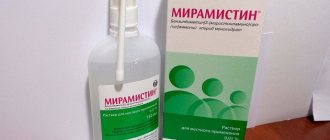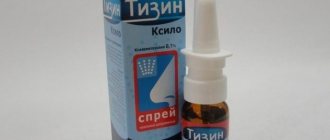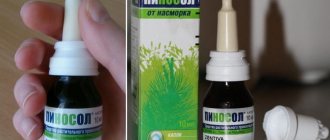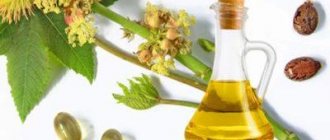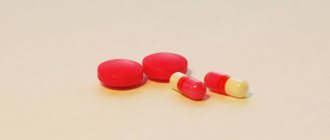Benefits of aloe
Aloe, also known as agave, is a unique plant that has antibactericidal, soothing, moisturizing, regenerating and anti-inflammatory effects, and also helps strengthen the immune system.
Appearance (photo) of aloe
- tannins;
- ascorbic acid;
- tocopherol;
- esters;
- flavonoids;
- B vitamins;
- beta-carotene;
- anthraquinone;
- many different acids and amino acids;
- resinous compounds, etc.
Such a rich chemical composition allows the use of agave in the following cases:
- diseases of the gastrointestinal tract;
- bleeding;
- presence of deep wounds;
- infectious diseases, colds.
- increased appetite;
- improving metabolic processes in the body;
- improving digestive processes;
- preventing the appearance of scars and cicatrices;
- eliminating itching and redness;
- improving the condition of the dermis.
Agave against various skin problems
During pregnancy, due to hormonal changes, the condition of the skin often worsens. Cosmetic masks will help reduce oily skin. They help eliminate the first wrinkles and acne.
Moisturizing mask recipe
The recipe for a mask designed to moisturize the face is simple:
- Two aloe leaves are thoroughly peeled.
- The pulp of the plant is thoroughly crushed.
- Add 10 g of moisturizing cream and 2 drops of aromatic peach oil to the resulting slurry. The finished mask is applied to previously cleansed skin for 25 minutes.
A product that helps with acne
If a pregnant woman has acne on her face, she should pay attention to a product that is applied as follows:
- The gauze needs to be folded in several layers.
- It is generously moistened with aloe juice.
- The product is applied to problem areas for 30 minutes. The procedure can be performed daily.
Rejuvenating mask
Some representatives of the fair sex decide to give birth to a child at a fairly mature age. It will be useful for such women to know the following recipe:
- You need to mix aloe juice, olive oil and cream that has an anti-aging effect in equal proportions.
- The resulting product is applied to thoroughly cleansed skin for 20 minutes.
- After this time, the remaining product is removed with a napkin.
Use of aloe during pregnancy
Pregnancy imposes restrictions on the use of most medications. That is why expectant mothers are increasingly paying attention to traditional medicine. But even they have certain contraindications for use.
It is prohibited to use the plant juice internally both in the early and late stages. This is due to the presence of anthraquinone in the composition, which has a laxative effect.
For this reason, putting aloe juice into your nose, drinking medications based on it, or using tampons with aloe is prohibited. The same applies to injections with aloe and the use of agave with honey for coughs.
Many women are saved from runny noses and colds with aloe juice. But it is not recommended to use it during pregnancy. This is due to the fact that the juice enters the body, and this can lead to a number of negative consequences.
The use of aloe juice in the first trimester is especially dangerous, since at this time the process of implantation of the fertilized egg and the formation of the placenta occurs. Until the placental barrier is formed, everything that his mother takes penetrates to the fetus. Therefore, you must wait for this process to complete.
The most favorable time to drip aloe juice into the nose is the period from the 2nd to 3rd trimester. But this can only be done with the permission of a doctor.
How to use agave juice for nasal drops? Mix water with plant juice in a 1:1 ratio, then drop 1 drop of the product into each nostril. If an allergic reaction does not occur, you can increase the amount to 3-4 drops in each nostril and up to 3 procedures per day.
Only young leaves of agave, the length of which does not exceed 15 cm, can be used to prepare a medicinal product. They must be cut off, then placed in the refrigerator for 2-3 days, and only then squeeze out the juice.
Aloe oil is useful for caring for the skin of the face, body and hair.
The plant oil has the following effects:
- tonic;
- restorative;
- anti-inflammatory;
- immunomodulatory;
- rejuvenating;
- calming.
Aloe oil is effectively used for medicinal purposes against dermatitis, allergic rashes, and bruises. The product copes well with hair loss, improves skin condition and slows down the aging process.
Before using the product, be sure to test it for an allergic reaction. To do this, apply a few drops of oil to your wrist. If after 10-15 minutes no itching or redness appears, you can use it.
During the period of bearing a child, the infusion of agave is used only externally. It is of particular benefit in the following cases:
- eczema;
- acne;
- allergic dermatitis;
- sore throat;
- inflammation and redness on the skin;
- the presence of purulent wounds;
- burns;
- psoriasis;
- herpetic rashes.
Aloe is a priceless gift of nature
There are more than three hundred species of aloe in the world. And they all have medicinal properties. The plant easily takes root in European homes, being distinguished by its enviable unpretentiousness. Since ancient times, agave juice, as it is commonly called in the post-Soviet space, has rightfully been a real panacea.
Today, drugs are produced from aloe in official pharmacology. At home, you can also use products made from aloe leaves. However, you should be scrupulous about taking such medications during pregnancy, taking into account some of the individual characteristics of each woman.
Table No. 1 provides a list of beneficial substances contained in aloe that have a beneficial effect on the body.
Table No. 1. Composition of aloe arborescens
| Nutritional Components | Impact on the body |
| Organic acids (alanine, arginine, asparagine, cysteine, glycine, histidine, proline, serine, tyrosine, tlutamine, glutamine, lysine, leucine, methionine, valine, tryptophan) | Take an active part in metabolic processes, are responsible for the restoration of damaged hair follicles, stimulate cell division |
| Anthrachions (essential oil, isobarbaloin, aloe-emodin, anthracene, aloin, resistanol) | Create a protective effect along the entire length of the scalp, providing a reliable barrier to the penetration of harmful environmental components |
| Tannins (salicylic acid, sterols, lupeol, campesterol) | They have a bactericidal effect, while simultaneously restoring damaged hair follicles and neutralizing increased sebum production |
| Phytoncides | Protect the epidermis of the head from the penetration of bacteria, spores of pathogenic fungi, preventing the appearance of dandruff |
| Minerals (sodium, potassium, phosphorus, calcium, magnesium) | Strengthen the immune functions of the body, taking part in almost all metabolic processes |
| Vitamins (beta-carotene, retinol, thiamine, riboflavin, nicotinic acid, pyridoxine, cyanocobalamin, ascorbic acid, tocopherol, folic acid) | Saturate hair follicles and nail plates with useful substances, neutralize decay products and dangerous toxins, fight free radical groups, performing an antioxidant effect |
| Flavonoids (luteolin, apigenin, myricetin, kaempferol, quercetin) | Natural immunomodulators with regenerating, restorative and balancing effects |
Preparations with aloe juice are endowed with the following properties:
- bactericidal;
- fungicidal;
- moisturizing;
- relaxing;
- anti-inflammatory.
The juice of aloe leaves is used for medicinal purposes. It is usually filtered or left as part of the gruel formed when raw materials are ground. Thanks to their unique composition, aloe preparations are effective for diseases such as:
- respiratory infections;
- sinusitis;
- runny nose;
- purulent sore throat;
- tonsillitis;
- pharyngitis;
- frontal sinusitis;
- otitis;
- allergic rashes on the skin;
- lifelessness of hair follicles;
- eye infections;
- stomatitis;
- haemorrhoids;
- constipation;
- diabetes;
- genital tract infections;
- purulent wounds;
- burns.
You may also be interested in: Constipation in pregnant women: symptoms, causes, how to treat, what to eat
Tannins accelerate the process of regeneration of damage to the mucous membranes of the oral cavity and digestive tract. When taking preparations from aloe juice, digestion is normalized, dangerous toxins and decay products are neutralized and quickly removed from the body. Aloe removes slagging from the intestinal cavity, restoring the motility of the intestinal walls, relieving constipation.
During early pregnancy, too high doses of aloe can cause increased uterine contractions, which threatens miscarriage.
External use
Agave is used externally depending on the disease or cosmetic problem. Below are the main methods of using the medicinal plant. We remind you once again that you can use it only after consulting a doctor.
Agave is effective in the treatment of sore throat, tonsillitis, and pharyngitis. For this purpose, an infusion of the plant is used to gargle.
To prepare the infusion, use the recipe below.
- water - 250 ml;
- aloe leaves - 2 pcs.
How to make: Grind the leaves, pour boiling water over them. Wait until the composition reaches an acceptable temperature.
How to use: Gargle with the infusion until the signs of the disease disappear.
For various skin lesions, it is recommended to use aloe juice. By the way, it can also be used against stretch marks or to prevent their appearance.
The use of medicinal plant juice stops bleeding, eliminates swelling and inflammation from the wound, removes pus, and accelerates the healing process of the epidermis.
Wounds are treated with agave in the following way:
- Take one clean leaf of agave and remove the skin from it.
- Apply the leaf to the wound.
- Apply a bandage on top and change it periodically.
Many expectant mothers, while carrying a child, are faced with such a delicate problem as hemorrhoids. Aloe can also cope with anal fissures or hemorrhoids. In this case, agave juice is mixed with any vegetable oil, after which the resulting mixture is treated with the damaged area. You can also use aloe pulp without peel for treatment, applying it to the affected areas.
Compresses made from agave decoction are effective for hemorrhoids. They improve the condition during exacerbations of the disease, which are accompanied by deterioration in well-being. You can prepare the remedy in the following way:
Ingredients:
- water - 2 glasses;
- aloe - 5 leaves.
How to prepare: Finely chop the aloe, add water, then place the composition in a steam bath.
How to use: Once the broth has cooled, soak gauze in it and apply to the sore spot. Secure the compress on top with cellophane or cling film.
To treat internal hemorrhoids, it is permissible to use “suppositories” from agave, the recipe is given below.
- aloe - 3 fleshy leaves;
- honey - 1 tsp;
- butter - 2 tsp.
Aloe masks for hair, scalp and face
During pregnancy, many women complain of a noticeable deterioration in the structure of the scalp. Aloe juice can strengthen hair, stimulating its growth, eliminating dandruff and itching. In cosmetology, there are several effective recipes for masks for external use, which are absolutely harmless at different stages of pregnancy:
- To improve hair growth. Combine 1 tbsp in a glass container. spoon of aloe juice, 1 tbsp. spoon of kefir, 1 teaspoon of castor oil, 1 raw egg yolk, 1 ampoule of vitamin E and 1 ampoule of vitamin A. After mixing all the ingredients, apply the resulting slurry with massage movements to wet hair roots and leave for half an hour. It is recommended to do the mask once a week.
- For hair loss on the head. In a glass bowl, mix 1 tbsp. spoon of aloe juice, 1 tbsp. a spoonful of honey, 1 egg yolk and 1 teaspoon of grated garlic. Apply the finished mixture to wet hair, trying to saturate the hair roots with the mixture as much as possible, cover your head with cellophane and a scarf made of natural fabric. After 20 minutes, rinse your hair thoroughly using another raw egg yolk to soften it. After such intense exposure to active substances on the scalp, it is recommended to rinse your hair with herbal decoctions. A decoction of sage, plantain, yarrow, St. John's wort, parsley root, chamomile flowers, and lavender is ideal. To restore the healthy appearance of the scalp, it is enough to carry out 5-7 procedures.
- For split ends of hair. Mix and heat jojoba oil and aloe juice in equal proportions. Make a mask over the entire length of your hair for half an hour. The procedure will provide a good effect after 2-3 times within two weeks.
- With profuse dandruff. Mix aloe juice, lemon juice and castor oil in equal proportions. Apply the resulting mixture evenly to the hair, massaging into the roots. Then cover your head with cellophane and a scarf made of natural fabric. After half an hour, rinse your hair thoroughly with warm water.
During gestation, the skin of the face and décolleté actively reacts to the variability of hormonal levels. The unique substances of aloe juice stabilize skin oiliness, while coping with increased secretion of the sebaceous glands and preventing dry skin. Aloe phytoncides eliminate acne and minor defects.
Contraindications
The use of aloe and preparations containing it is prohibited in the following cases:
- individual intolerance;
- pregnancy;
- acute dysfunction of the digestive tract;
- diseases of the cardiovascular system;
- hypertension;
- the presence of chronic pathology in the acute stage.
In all other cases, it is recommended to consult a doctor.
During pregnancy, aloe is beneficial only if used externally. Oral use may cause miscarriage or problems with fetal development. If you suffer from a runny nose and cough, then use only approved medications for treatment while pregnant.
Aloe juice during pregnancy
A common occurrence during pregnancy is a runny nose. Future mothers are concerned about the question: is it possible to drip aloe during pregnancy? After all, you want to be cured of an illness without harming the baby. Let's consider this issue in more detail.
A similar plant decorates the window sills of almost every house and apartment. Contains amino acids, vitamins A, B, C, E, as well as trace elements that help fight infectious diseases.
There are some prohibitions on taking aloe during pregnancy.
Many experts are inclined to believe that it is prohibited to use aloe internally for a runny nose during pregnancy.
The biologically active substances included in the composition have a laxative effect, which leads to contraction of the uterine muscles, which leads to early birth of a child or termination of pregnancy.
Aloe juice during pregnancy promotes a rush of blood into the pelvis, while blood glucose decreases. The plant can be used if there are no other means of fighting the runny nose at hand.
According to the point of view of some doctors, aloe is an effective and at the same time reliable remedy, if we compare medications obtained by chemical means.
It is highly undesirable to use aloe juice in the nose at the very beginning of pregnancy. During this period, the baby’s organs and systems are being formed, and even a slight effect of medications can be detrimental.
In the second and third trimester, aloe can be used, but with precautions.
Benefits of aloe:
B vitamins can strengthen the nervous system, have a regenerative effect on mucous membranes and skin, and normalize metabolism. C and E - strengthen the body’s protective properties, while relieving fatigue and improving blood circulation. Vitamin A has a beneficial effect on the visual system, reduces cholesterol in the blood, and has a positive effect on the condition of the skin and hair. Allantoin improves skin renewal.
Taking the juice internally is prohibited , but it is quite suitable for external use. The juice can be used as an additional therapy for skin care, throat care, use aloe juice in the nose.
Before using a herbal preparation, you should definitely consult your doctor.
"Rinostop" during pregnancy - is it possible?
How to improve expectoration during pregnancy?
Read about whether you can rinse your nose with chamomile here.
Video: Aloe for stretch marks
Previously, almost every house had pots of aloe on the windowsills. The flower was used not only to purify the air in the room, but also for medicinal purposes. Aloe is a storehouse of useful, healing substances.
Is it possible to use juice, oil, cream, tincture for pregnant women, what are the benefits and dangers of the plant, and how to prepare remedies for hemorrhoids, colds and runny nose?
How to treat nasal congestion during pregnancy
It is clear that at the first sign of a runny nose, not a single pregnant woman will run headlong to the doctor. You shouldn’t definitely resort to self-medication, but you can help yourself. You can make your breathing easier with:
- Sufficiently humidify the air in the room using wet towels or you can use a special device - a humidifier (humidity should be at least 65%);
- Maintaining the air temperature in the room no higher than 20 degrees, constant ventilation;
- Drinking enough liquid (preferably plain warm water);
- Avoid all allergens;
- Elevate your head during sleep and rest, placing a pillow so as not to be completely horizontal. Read a useful article about pregnancy pillows>>>;
- Frequently rinsing the nose with sodium chloride solution, saline solution or special pharmaceutical solutions (Aquamaris, Aqualor, Marimer);
- Carrying out inhalations with mineral water without gas (Borjomi, Eseentuki 4 or 17), sodium chloride solution.
When a pregnant woman experiences prolonged nasal congestion without any other symptoms, as we discussed above, we are talking about hormonal rhinitis. This condition cannot be treated at all; it will go away on its own within 1-2 weeks after birth.
To moisturize the mucous membrane and make breathing easier, you can constantly irrigate your nose with moisturizing sprays or saline solutions, which have absolutely no contraindications.
Can juice, oil, cream, tincture be used by pregnant women?
Agave is endowed with a wide range of actions. It is used not only in its pure form, but also as:
Aloe contains substances that can cause uterine tone, which can cause miscarriage or premature birth.
Before use, you should consult your doctor during pregnancy. If there are no contraindications, a pregnant woman can use creams and oils for cosmetic purposes. Oil infused with aloe has soothing, antiseptic, and healing effects. It helps with allergic rashes and acne.
Using the cream in small quantities will moisturize and rejuvenate the skin. The composition of the flower is rich in beneficial substances and vitamin E. The cream, which contains aloe, eliminates fine wrinkles, relieves dry skin, and protects against UV rays.
In addition to its beneficial and medicinal properties, aloe has a number of contraindications and side effects. Aloe should not be used in the following cases:
- exacerbation of gastrointestinal diseases;
- pathologies of the cardiovascular system;
- bleeding;
- hepatitis A;
- cystitis;
- individual intolerance.
Aloe to boost immunity
The following mixture is considered an excellent composition for increasing the protective functions of the body, which is taken 1 teaspoon before eating:
- 100 grams of fresh aloe juice;
- 500 grams of chopped walnut kernels;
- 300 grams of honey;
- juice from 4 lemons.
The use of any products with the addition of aloe must be coordinated with the doctor observing the pregnancy. The active substances contained in the juice in high concentrations weaken the peristalsis of the intestinal walls, which can lead to digestive disorders and inflammatory diseases of the large intestine.
Also, preparations made from aloe juice have a stimulating effect on the body, so it is not advisable to take them after 18.00, so as not to provoke insomnia.
Cooking recipes with step-by-step instructions
There are many recipes for preparing medicinal decoctions, tinctures of mixtures to relieve inflammation, and treat diseases.
Honey and aloe go well together as both have beneficial properties. Both components:
- strengthen the immune system;
- heal wounds;
- treat diseases of the digestive tract and respiratory organs.
A mixture of aloe and honey is good for:
- uterine erosion;
- heartburn;
- asthma;
- sore throat and other illnesses.
Agave juice can relieve aggravation of hemorrhoids. To relieve pain and relieve inflammation, you can prepare a decoction:
- Take three large aloe leaves and fill them with 500 ml of water.
- Place the container in a water bath and cook for 20 minutes over low heat. You need to stir during cooking.
- Remove from heat until it boils, then strain and cool.
Recipes for cold medicine from aloe
It is not recommended to use pure agave juice in the treatment of a runny nose. If you neglect this advice, then in adults, and especially in children, burns appear on the nasal mucosa when instilled. Many recipes for the common cold based on aloe juice consist of several ingredients that enhance the effect of the active components in the plant and thereby speed up the healing process. The most effective and affordable recipes based on agave, with which you can prepare nasal drops, are presented below.
- To successfully treat a runny nose with aloe, simply mix agave juice with boiled water in a certain proportion. For children under 1 year old it is 1:5 (1 part juice to 5 parts water), from 1 to 12 years old - 1:2 or 1:3, for adults - 1:1. Aloe can be dripped into the nose 4 times a day, up to 5 drops alternately in each nostril. Treatment should be continued until complete recovery, at least 5 days.
- To treat a runny nose in children over two years old, combine aloe juice with honey (1:1 ratio), add the same amount of boiled water and apply 4 drops in the nose twice a day until recovery occurs. For children under this age, aloe is not instilled, but only the nasal passages are wiped with the resulting medicine.
- In the following recipe you need to mix olive oil and agave juice in a ratio of 1:3. Place the resulting oil emulsion into the nose three times a day, 3 drops.
- An effective remedy for getting rid of a runny nose can be obtained by mixing honey, lemon juice and aloe in equal proportions. Place 2 drops into the nose 4 times a day.
- A tincture based on aloe juice is used to rinse the nose. To prepare it, you should chop 7 cloves of garlic, pour in a liter of hot boiled water and, cover with a lid, set aside until the liquid has cooled. After this, the tincture should be combined with aloe juice in a 2:1 ratio and the nasal passages should be washed twice a day. The same medicine can also be used for nasal instillation. To do this, agave juice is mixed with garlic tincture in equal volume. You need to put 3 drops in your nose twice a day.
- Pour one teaspoon of chamomile and the same amount of eucalyptus into 250 ml of hot boiled water and continue to steep for an hour. After the specified time, strain the liquid through a piece of gauze, let it cool, add one tablespoon of aloe juice. For a runny nose, rinsing your nose at least three times a day will be effective.
- A folk medicine made from aloe juice and honey (1 tablespoon each), crushed rose hips (teaspoon) and ½ teaspoon of eucalyptus oil will help speed up the healing process. Soak cotton swabs in the resulting tincture and place them in the nasal passages for 5 minutes, 2 times a day.
- During the cold season, you can prepare a folk remedy for the prevention and treatment of diseases of the ENT organs, which must be taken orally. Cool the aloe leaves and grind them in a meat grinder or using a blender. Pour a glass of the resulting slurry with three glasses of alcohol (vodka) and let it brew in a dark, cool place for at least 10 days. To treat a runny nose, alcohol tincture is taken 20 drops twice a day, for prevention - 10 drops once a day for a month.
Proven recipes based on agave juice will help improve health during colds and strengthen the immunity of adults and children.
Is it possible to put drops into the nose if you have a runny nose?
Agave has a beneficial effect on the nasal mucosa. With its help you can get rid of a runny nose harmlessly. Aloe copes with:
Find out further whether pregnant women can use nasal drops. During pregnancy, you should not get carried away with drops. The flower contains the substance anthraquinone. Once inside, it has a laxative effect and muscle spasm occurs. Blood rushes into the pelvic organs, which can cause premature birth in a pregnant woman.
Aloe juice may cause allergic reactions. Cannot be used if individual tolerance occurs. Use is contraindicated for pregnant women in the early and late stages.
Internal and external use of aloe juice products
The plant gains healing power after three years of growth. However, it should be borne in mind that ten-year-old aloe is considered an aging plant, losing its ability to provide a healing effect.
To prepare medicinal compositions from aloe juice, the lower thick leaves, 10 to 15 centimeters long, are cut off. Young tips are considered to have not yet gained healing power. Before cutting the leaves, the flower should not be watered for two weeks.
The cut leaves are washed, dried, and the side needles are removed with a sharp knife. A thin layer of outer skin is then removed, exposing a thick layer of pulp, which should be crushed and squeezed through a layer of gauze.
The best effect from the plant juice can be obtained if you leave the cut leaves in a dark, cool place for 7-10 days. Aloe cells “turn on” protective mechanisms, activating biogenic stimulants, which are simply irreplaceable for sick human organs.
During pregnancy, external use of preparations with aloe juice is considered the safest. They are effective for certain pathologies that often arise in everyday life and during pregnancy:
- acne;
- purulent wounds;
- burns;
- weeping eczema;
- allergic dermatitis;
- herpes;
- ingrown nail plates;
- dandruff.
The pharmaceutical industry produces aloe oil, which is an excellent biostimulant that has healing effects on the body:
- soothing;
- antioxidant;
- regenerating;
- tonic;
- immunomodulatory;
- anti-inflammatory.
Aloe juice or oil is used to treat bruises, dermatitis, skin rashes, fistulas, and hair loss on the head. As soon as the active substances from the drug are on the skin, the synthesis of collagen and elastin immediately begins, effectively slowing down the aging process.
The active substances of aloe perfectly cope with any damage to the skin. By applying a paste of crushed leaves to a bleeding or purulent wound, it is possible to quickly relieve swelling and fever, neutralize purulent discharge, and speed up the regeneration processes of external tissues.
To prepare the finished medicine, just cut off an aloe leaf and leave it at room temperature for several hours. The pulp is then separated from the outer skin. The fleshy inner part of the plant leaf is applied to the affected area, covered with polyethylene on top. This compress can be left until the pulp on the wound is completely dissolved.
Thanks to the high content of B vitamins, aloe juice normalizes the functioning of the nervous system, taking an active part in removing decay products and dangerous toxins at the cellular level.
Internal use of aloe preparations during pregnancy is contraindicated in most cases. The active substances of aloe juice increase blood flow to the pelvic organs. You can use aloe juice to treat inflamed mucous membranes of the nasopharynx at any stage of pregnancy.
Rectal suppositories with aloe pulp effectively heal irritated areas of the anal canal, providing an antibacterial and decongestant effect. This is an indispensable remedy for hemorrhoids. Vaginal tampons with aloe oil or juice can be used in late pregnancy, when the placenta is already fully formed and reliably protects the embryo. In any case, appointments should be made by a specialist observing the course of pregnancy.
How to use: what is the dosage and frequency, do you need to heat it?
Aloe is used in the form:
It is used both externally and internally. In order to exclude an allergic reaction, it is necessary to apply a small amount. If no side effects occur. This means you can continue to use it.
You should use aloe vera preparations prepared at home no more than once a day.
During the preparation process, aloe is boiled in a water bath, poured with boiling water, and simmered over low heat.
Aloe: when to use and when not to use
Aloe can be called a unique plant that has anti-inflammatory, antibactericidal properties, it improves immunity and ensures tissue regeneration. Therefore, it is often recommended for:
- diseases of the gastrointestinal tract (even during pregnancy, an exacerbation of a disease, for example, pancreatitis, can occur. Read the article on the topic: Pancreatitis during pregnancy>>>);
- bleeding;
- deep wounds;
- colds and other infectious diseases.
But, despite its effectiveness, the plant also has contraindications. These include:
Click here to find out how easy it is to prepare for childbirth and give birth without tearing! Starts September 18>>>
- Allergy to the plant;
- Pregnancy;
- Acute chronic diseases;
- Internal bleeding;
- Kidney or liver diseases;
- Hypertension;
- Age up to 1 year and use of aloe by older people.
Juice recipe
Aloe juice can be prepared according to the following recipe:
- It is necessary to take a few fleshy leaves from a plant that is 3 to 5 years old.
- Wrap the leaves in thick paper and refrigerate for 14 days.
- Then the leaves need to be crushed and poured with boiled, cooled water. The proportions are 1:3.
- Mix the mixture well and let it brew for 2.5 hours, then squeeze and filter.
Sweet aloe juice for medicinal recipes:
- We select large leaves and press them a little.
- Fill them with distilled water and add a little granulated sugar.
- Simmer over low heat until the consistency of the liquid becomes viscous like syrup.
Summing up, is it possible for pregnant women to use aloe, we can conclude that it can be used, but with extreme caution and preferably only externally. Before using agave, you should consult your doctor.
Correct and moderate use of agave can:
- relieve exacerbation of hemorrhoids;
- cope with rashes and irritations;
- cure colds;
- boost immunity.
If you find an error, please select a piece of text and press Ctrl+Enter.
Aloe is a popular indoor plant found in many homes. It is bred not only for decoration, so that the flower will show off on the windowsill, but also to be used for medicinal purposes. The plant is also widely used in cosmetology; thanks to its many beneficial properties, recipes based on it can become an analogue of expensive store-bought products. Aloe should be used carefully during pregnancy. It is better to limit yourself to external use, avoiding internal use.
Using aloe to treat rhinitis
The recipe for a miracle cure for the common cold is simple. It is necessary to cut off the lower leaves of the plant and rinse with water. Squeeze out the juice and dilute it half with water. The product should not be used undiluted, as agave juice has a powerful effect and can cause a burn.
Repeat the procedure 4 times a day. For treatment, an adult plant that is more than three years old is used. Aloe juice must be used immediately after cutting; it should not be stored for a long time, as storage leads to the loss of healing properties.
Aloe juice is effective in treating sinusitis. To do this, you need to dilute it with carrot juice in a ratio of 1:2. You can also arrange inhalation over a saucepan with agave decoction.
You can also prepare a tincture to treat a runny nose. To do this, the leaves of the plant are crushed using a grater or blender.
The pulp is transferred to a container and ethyl alcohol is added.
The tincture is stored in a dark place for 10 days. After the specified period has expired, it can be used.
It is used both for the treatment of acute rhinitis and for preventive purposes in autumn and winter.
This product should be used with caution by pregnant women and diluted half with water, since the tincture contains alcohol. If there is a large amount of discharge, it is recommended to instill two drops into each nasal passage
A large amount of the drug can cause dry nose or a burn.
When rhinitis passes into the chronic stage or if there are signs of sinusitis, it is necessary to add honey.
To prepare the product, you need to mix aloe juice with honey and dilute with warm boiled water. The product is ready for use.
It is necessary to instill five drops into each nasal passage before going to bed.
Immediately after use, dry nose and tearing may occur. These symptoms pass quickly.
As soon as the product gets into the nose, it immediately begins to have an active effect. A natural antibiotic helps suppress pathogenic flora, normalizing breathing and reducing swelling.
In conclusion, the following conclusions can be drawn. Aloe juice is strictly not recommended for use internally by expectant mothers. For the treatment of rhinitis, it is allowed to be used in the second and third trimester. Before use, you should consult with your doctor, who will help you choose the right dosage. Aloe very rarely can cause allergies. If the dose is exceeded, poisoning of the body occurs.
Self-medication is unacceptable, especially when it comes to the health of the unborn baby.
After all, a young mother may not know about the importance and seriousness of the drug she is taking. There is no need to take risks, use generally accepted methods for treating a runny nose that your doctor approves
Be healthy!
Using aloe during pregnancy can not only be beneficial, but also harmful.
Whether to introduce aloe into the diet during pregnancy is a very sensitive question that does not have any clear answer. The thing is that the female body is quite individual, so what is preferable for one girl may be disastrous for another. The only sure way out is to consult a specialist and do only what he recommends. Aloe juice infusion is useful only if you use it wisely.
Plant composition
Aloe includes several varieties; in our area, aloe vera (or real) and agave (tree-like) are usually grown and used. The chemical composition of the plant is so unique that it can be effectively used for various medicinal and cosmetic purposes. Beneficial substances are contained in both stems and leaves.
97% of the composition is occupied by components that are liquid in structure, so the leaves and stems inside are watery. The most valuable substances are considered:
- essential oils and ester compounds
- citric, malic and other beneficial acids
- flavonoids
- phytoncides
- resins
- tannins
- amino acids
- polysaccharides and monosaccharides
- other
Particularly valuable is the content of vitamins of different groups in the plant (A, B, C, E). To take advantage of their medicinal properties, the juice of the plant is usually used, preferably freshly squeezed. The vitamins and other components that make up the flower have many beneficial properties, for example:
- antifungal
- antivirus
- hypoglycemic
- anti-inflammatory
- restorative
- immunomodulatory
- antioxidant and others
General information about aloe
This genus of plants includes more than 500 species, but no more than one and a half dozen are used for medicinal purposes. The most popular are aloe vera and agave - true, or tree-like, aloe. Their medicinal properties are almost identical, but agave is more often used for open wounds, cuts and skin diseases, and aloe vera is more often used internally.
The uniqueness of the plant is that it contains approximately 250 biologically active substances. On this basis, not a single representative of the flora can compete with it.
As you know, aloe stores moisture in its leaves, so their main component is water. In addition to it, aloe is rich in esters, organic acids, vitamins, tannins and resins, amino acids, poly- and monosaccharides, trace elements and other beneficial substances.
The healing properties of this plant have been known since ancient times and the era of Egyptian priests. Aloe is used for medicinal purposes and for the production of perfumes, cosmetics, and also in cooking.
In medicine, juice extracted from the leaves or stem is used. Fresh or evaporated juice (sabur) is used with equal frequency. They are able to have a positive effect on the entire body, thanks to the complex work of various compounds. This greatly enhances the healing effect of the natural plant compared to its medicinal forms.
In medicine and cosmetology, plant oil and syrups, gels, ointments and liquid extracts made from it are also used.
Fresh aloe juice and pulp can strengthen the cardiovascular, nervous and immune systems, normalize the gastrointestinal tract, improve skin condition and even vision.
Folk remedies based on aloe have an antifungal and antiviral effect, cleanse the body of waste and toxins, normalize blood sugar and cholesterol levels, increase overall tone and resistance to acute respiratory infections, have an analgesic effect, and are used to treat diseases of the oral cavity, respiratory tract, and infectious diseases in women, and also have antioxidant, diuretic and laxative effects.
Using aloe during pregnancy: tips and warnings
During pregnancy, many women have questions about the advisability of use. The thing is that it is impossible to treat many diseases at this time with conventional medications, because the period of pregnancy and lactation is often included in the list of contraindications. Expectant mothers have to turn to traditional medicine.
The opinion of experts regarding the use of aloe by pregnant women agrees that it can be used externally. It is important to take into account the advice and recommendations of doctors. If you want to use the plant as a medicine, it is better to ask your doctor for permission.
Folk remedies for runny nose during pregnancy
The first symptom of a cold or hypothermia can easily be called a runny nose. Swelling of the nasal mucosa provokes congestion and complicates free breathing. Constant mouth breathing can provoke the addition of another infection. And although popular wisdom says that a runny nose will go away in a week, whether you treat it or not, you shouldn’t do nothing at such a moment.
It is impossible to use medications uncontrollably during pregnancy, so if a woman feels unwell, she should consult her doctor. He will be able to determine the cause of the runny nose and only then give recommendations on how to alleviate the unpleasant symptom.
If, in addition to snot, there is a headache, fever, chills, body aches, pain or sore throat, then most likely the runny nose is of a cold origin. In this case, your doctor will tell you about the use of medications. It is better to refrain from using vasoconstrictor drops, because their effect is short-term, and long-term use of such drugs is addictive. You can use proven folk methods to combat colds and runny nose.
The most important thing is to frequently moisturize your mucous membranes and clear your nose of mucus. To moisturize, you can use ready-made saline solutions sold at any pharmacy, or prepare such a solution yourself. To do this, you need to boil water, cool it to room temperature and dissolve ordinary table salt in it in the proportion of 1 gram of salt per 100 ml of water. The most convenient way to use saline solution is to drop it into your nose using a pipette or syringe, and then blow your nose to clear the mucus from your nose. You can use a nebulizer and inhale with saline solution. Sometimes it is recommended to rinse your nose with a herbal infusion of chamomile or sage.
A fairly popular remedy for the common cold in folk medicine is freshly squeezed carrot, apple or beet juice (as nasal drops)
It should be noted that such drops must be used extremely carefully (no more than three times a day, a few drops) and only in diluted form, because freshly squeezed juice can cause an allergic reaction. The same can be said about aloe leaf juice.
Some lovers of traditional methods recommend brewing black tea mixed with soda as nasal drops. It is not recommended to use onion or garlic juice for such purposes, as it is quite aggressive and can cause burns to the mucous membranes.
You can use ready-made cold drops based on essential oils
Or perform steam inhalations by brewing medicinal herbs and breathing carefully over the container with the decoction. It should be remembered that most thermal procedures used for colds are contraindicated for pregnant women.
General recommendations for fighting a cold may be useful. For example, frequent ventilation of the room and drinking plenty of fluids. It is best to drink warm herbal infusions (chamomile, sage, linden, rosehip), compotes, fruit drinks, warm milk, berry tea (black currant or raspberry are suitable). Here it is worth clarifying that in the third trimester of pregnancy you should not get carried away with drinking heavily, because this can cause the formation of edema.
In addition, the culprit of snot in a woman while she is expecting a child can be not only a cold or a respiratory disease. Often a runny nose is allergic. The main advice here is: do not contact at all or reduce contact with the allergen to a minimum. Is it possible for a pregnant woman to take antihistamines, and if so, which ones? Only a qualified specialist can give an accurate answer to these questions.
Often, swelling of the mucous membrane is provoked by hormonal changes in the body of a pregnant woman. This kind of “pregnant” runny nose cannot be cured; it goes away only after childbirth. In this case, you need to find means to alleviate the unpleasant condition.
Alternatives for internal use
You can replace the plant with other means, including traditional medicine. For example, expectant mothers often have inflamed hemorrhoids. An alternative to aloe for hemorrhoids during pregnancy can be suppositories made from raw potatoes, infusions of chamomile, oak bark and other medicinal herbs. In the last stages of pregnancy, for the treatment of hemorrhoids, doctors may recommend aloe for external use to eliminate external manifestations of inflammation.
Aloe is especially often used in the treatment of colds. An alternative to the plant for a runny nose can be sea salt - an effective remedy for combating congestion. You can buy ready-made preparations based on it, for example, Humer, No Sol and others. Homeopaths, usually approved during pregnancy, are also effective for a runny nose.
Tips for use
Although topical aloe is suitable for pregnant women, it must be used with caution. It is better to try a small amount of the product first, then wait a few days. If allergies or other unwanted reactions do not begin, you can continue to use the plant.
While pregnant, many women worry about stretch marks appearing all over their body. They remain even after childbirth; the sooner you start fighting them, the faster you can get rid of them. Aloe for stretch marks during pregnancy can be used in different ways.
You can simply apply the plant juice to problem areas, you can add it to various scrubs, for example, combining it with ground coffee and olive oil.
Aloe on the wound
Aloe juice has a powerful wound-healing effect, so it can be used for application to a wound. If the skin is deeply damaged, bleeding occurs, which is difficult to stop with conventional means, then aloe leaves can be used. They can simply be cut lengthwise and applied to the bleeding wound.
Before applying, thorns must be removed from the leaf. Once the bleeding has stopped, you can continue to use the plant to speed up the healing process. To do this, you need to squeeze out the juice and make lotions with it. They can be left overnight; the specifics of use depend on the location of the wound.
Aloe for hair
Deterioration of hair condition during pregnancy is a common problem that can be dealt with using aloe juice. The easiest way is to use whole leaves: cut them lengthwise, run them along the entire length of the hair, leave for half an hour, then wash your hair. Masks based on aloe juice are also effective, such as:
- Mask with kefir. Take juice and kefir in equal quantities, mix, apply to hair along the entire length. Rinse off with water and wash hair with shampoo.
- Mask with jojoba oil. We take both components in equal quantities, heat them in a water bath to room temperature, and apply them to the entire length of the hair. Wrap your head in warmth, after half an hour, wash off the mask and wash your hair with shampoo.
Aloe for face
The juice of the plant effectively fights acne, blackheads, age-related problems - wrinkles, loss of skin tone. Some women resort to radical methods such as beauty injections and plastic surgery. In fact, if you regularly take care of your facial skin using affordable products such as aloe, you can keep it toned.
There are many recipes for masks and other aloe-based facial care products. To choose the most suitable one, you need to know your skin type and what problem you need to solve. The easiest way for a pregnant woman is to contact a cosmetologist and consult with him about choosing an aloe-based recipe.
Although aloe has many beneficial properties, due to its rich composition, its use during pregnancy is not always advisable. It is acceptable to use the plant for external use, for example, to strengthen hair, maintain facial skin tone, and fight stretch marks. If any adverse reaction occurs from using aloe, you should stop using it. In the first trimester, when serious hormonal changes occur in a woman’s body, it is better to avoid using any previously untested means.
Questions: how to take aloe orally
Despite the whole kaleidoscope of beneficial properties, aloe is strictly not recommended to be taken internally during pregnancy and lactation.
Aloe infusion should be taken during pregnancy strictly under the supervision of the attending physician.
The reason for this phenomenon is the high activity of the active substances, which can even provoke fetal rejection. Even a single use can provoke a negative phenomenon!
However, there are exceptions to any rule, and sometimes taking aloe juice internally is simply necessary. It can be diluted with honey or a decoction of medicinal herbs, or even ordinary water. Some people prefer to eat crushed leaves. Such experiments must be carried out very carefully when breastfeeding, because... a new unusual product can trigger allergies.
You need to drink the infusion according to the following scheme:
- Starting with the minimum dosage;
- Avoiding extreme concentration;
- Under the supervision of the attending physician.
Without third-party components (aloe juice)
To extract juice from a plant, you need to squeeze out all the liquid from the leaf. The most useful are old plants, which contain more nutrients. To achieve the best effect, the patient needs to place the squeezed liquid in the refrigerator - in this way it is easy to activate all the beneficial substances contained in the juice.
You need to drip one drop at a time in order to avoid serious problems in case of an allergic reaction. Four or five drops placed in each nostril three times a day will be sufficient. Toxic substances are neutralized, the infection does not multiply, and the runny nose decreases very soon after the start of treatment.
When performing such manipulations, it is not difficult to get rid of a runny nose using a simple aloe plant, but it is important to approach such treatment with all seriousness and understanding of the risks.
Methods of application
For pregnant women with sinus congestion, the following recipes are recommended:
- Washing with agave juice. The squeezed liquid is diluted with cooled boiled water in a ratio of 1 to 1. Pure juice can cause burns to the mucous membranes. The head is tilted at an angle so that the liquid enters one nostril and exits through the other. Session duration: 1-2 minutes. 3-4 procedures can be performed per day.
- Honey drops. You need to dilute 60 ml of agave liquid in ¼ cup of boiled water and add 4 tbsp. l. honey To enhance the effect, squeeze out 3-4 drops. lemon You can instill it 3 times a day.
- Turunda in the nostrils. 3 rose hips are chopped and mixed with 30 g of honey. Add 2 tsp. eucalyptus leaf oil and 1 tbsp. l. Agave juice. The mixture is diluted with warm water. The cotton wool is soaked in liquid and inserted into the nostrils for 10 minutes.
Honey has anti-inflammatory properties.
- Instillation of tincture. Pass 2-3 leaves of agave through a meat grinder. The raw materials are placed in a glass container and filled with high-quality vodka or 70% alcohol. The bottle must be left in the dark for 1-2 weeks. Before instillation into the nose, the tincture is diluted with water. 2 procedures per day are indicated. The optimal dosage for 1 dose is 1-2 drops.
It is recommended to use alcohol drops in extreme cases, strictly observing the dosage. Alcohol, even in minimal quantities, can negatively affect the baby.
Directions for use and precautions
Is it possible to drink aloe juice during pregnancy? The expectant mother should take this remedy strictly with the consent and under the supervision of a doctor. The juice of the plant should not be consumed in concentrated form: it must be diluted with herbal decoctions, honey, and water.
To boost immunity and refresh the mouth, the leaves can be chewed for 2-3 minutes and then spit out the pulp.
When using this plant at home, you must follow these rules:
- start drinking juice with a minimum dosage;
- do not take the concentrated product;
- listen to your body and immediately notify your doctor about any changes.
It is important to follow these recommendations when using aloe externally. Juice for instillation into the nose must be diluted with drinking water in a 1:1 ratio. Maximum dosage: 2 drops twice a day. To treat a sore throat, the fleshy leaves of agave are brewed with boiling water and infused for 1 hour.
External hemorrhoids can be lubricated with aloe juice mixed in equal proportions with olive or corn oil. For internal hemorrhoids, candles cut from the pulp of agave are used, which are first dipped in softened butter, propolis infusion or honey and inserted into the anus. To heal skin wounds, a peeled, fleshy aloe leaf is applied to the problem area and secured with a bandage. The compress is changed every 12 hours.
Masks are made to strengthen hair and combat dry scalp. A mixture of 20 ml of aloe juice, 20 ml of warm kefir, 5 ml of castor oil, 1 chicken egg yolk and 3 drops of vitamin E is highly effective. The composition is applied to the hair at the roots and left under an insulating cap for 30 minutes. It is recommended to do this mask weekly.
Aloe is used to prepare effective products for facial care. The crushed leaves of the plant are mixed with any vegetable oil and anti-wrinkle cream in equal proportions. The composition is applied to the face after using the scrub, and after 15 minutes it is removed with a napkin. The procedure is carried out every 3 days.
Before using aloe in any form, it is important to test for allergic reactions. To do this, a drop of the concentrated product must be applied to a sensitive area of the hand, for example the wrist or the inner bend of the elbow. If after an hour the skin remains unchanged, the juice can be used for treatment.
In order for the biological substances included in the juice to be activated, the agave must be prepared before use. It is necessary to cut off the young leaves of the plant (up to 15 cm long), wrap them in cling film and put them in the refrigerator for 3 days.
To terminate a pregnancy
Conception is not always planned. Having discovered signs of pregnancy, some women decide to get rid of the fetus on their own, including with the help of aloe.
However, provoking an early miscarriage using folk remedies is extremely dangerous, since the substances contained in the leaves of this plant cause uterine contractions, and the separation of the fertilized egg will be accompanied by severe bleeding, which is difficult to stop at home. In addition, the fetus may remain in the uterine cavity, and the woman will have to go to a medical facility where she will have a curettage, which often leads to infertility. For this reason, abortion can only be performed in a medical facility.
When choosing treatment methods, the expectant mother should not experiment. Not only her own health, but also the life of the unborn baby depends on her actions. If in any doubt, you should seek the help of a specialist.

